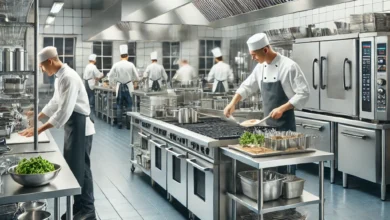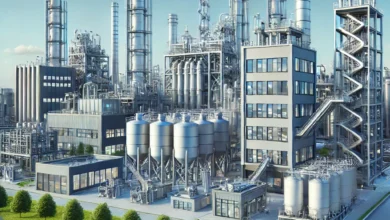The Evolution and Impact of Commercial Ovens: A Culinary Powerhouse

In the bustling world of culinary arts, the commercial oven stands as a true testament to innovation, convenience, and creativity. With a history spanning centuries, this essential kitchen appliance has transformed the way food is prepared, enabling chefs and foodservice professionals to deliver consistent, delicious results on a large scale. From traditional brick ovens to state-of-the-art convection systems, the evolution of commercial oven has not only revolutionized the culinary industry but also left an indelible mark on global food culture.
Historical Roots and Technological Advancements:
The concept of baking predates recorded history, and with it, the rudimentary form of an oven was born. Early civilizations relied on simple clay or stone structures heated with fire to cook food. The transition from these basic setups to sophisticated commercial ovens was gradual and driven by technological advancements.
The Industrial Revolution marked a significant turning point in oven development. The creation of coal-powered ovens and the introduction of temperature controls laid the foundation for the modern commercial oven. The late 19th century saw the birth of the first gas ovens, which not only offered more precise control over cooking temperatures but also revolutionized the baking and cooking processes.
In the 20th century, the advent of electricity brought about electric ovens, providing even more control and efficiency. The incorporation of convection technology further enhanced cooking uniformity by circulating heated air throughout the oven chamber. This advancement was pivotal for commercial kitchens as it reduced cooking times and improved the quality of baked goods.
Diverse Types of Commercial Ovens:
The commercial oven landscape is diverse, catering to various culinary needs and preferences. Brick ovens, reminiscent of ancient methods, remain popular for pizza and artisanal bread-making due to their ability to produce a unique flavor profile. Deck ovens, often found in bakeries, simulate the effects of brick ovens by using stone decks to radiate heat. Visit https://www.easyequipment.com/blog
Convection ovens, with their fan-forced air circulation, have become a staple in kitchens around the world. They ensure even cooking and browning, making them ideal for baking pastries, roasting meats, and more. Combi ovens combine the power of steam and convection technology, allowing chefs to control humidity levels and achieve delicate, moist dishes or crispy, browned textures with equal finesse.
Rotisserie ovens have also found a special place in the commercial realm, spinning meats on a rotating spit to ensure even cooking and delectable flavors. Microwave ovens, while not as predominant, are still valuable for rapid reheating and certain cooking tasks, especially in fast-paced environments.
Impact on Culinary Businesses:
The influence of commercial ovens extends beyond their technical specifications. These appliances have had a profound impact on culinary businesses, transforming the way food is prepared, presented, and perceived. Commercial ovens have enabled bakeries to craft perfectly risen bread and pastries, pizzerias to achieve that coveted crispy crust, and restaurants to consistently deliver flawlessly cooked dishes.
Moreover, commercial ovens have empowered chefs to experiment with novel cooking techniques and fusion cuisines. The precision and reliability of modern ovens provide a canvas for culinary creativity, allowing chefs to push the boundaries of flavor, texture, and presentation. This has played a crucial role in shaping contemporary gastronomy and elevating the overall dining experience.
Efficiency and Sustainability:
As technology continues to advance, commercial ovens have become more energy-efficient and environmentally conscious. The implementation of better insulation materials, improved heat distribution systems, and energy-saving features has reduced the ecological footprint of these appliances. In an era where sustainability is a paramount concern, the culinary industry benefits from these eco-friendly innovations.
Challenges and Future Trends:
Despite their many benefits, commercial ovens do present challenges. Maintenance and proper cleaning are essential to ensure optimal performance and food safety. The cost of acquiring and maintaining high-quality commercial ovens can also be a hurdle for smaller establishments.
Looking ahead, the future of commercial ovens seems promising. Integration with smart technology is on the rise, enabling remote monitoring, precision control, and data-driven insights into cooking processes. This paves the way for even greater consistency and efficiency in commercial kitchens.
In conclusion, the commercial oven stands as a testament to culinary ingenuity and technological progress. From humble beginnings as primitive fire-heated structures to the advanced, multifunctional systems of today, commercial ovens have significantly impacted how food is prepared, served, and enjoyed. As the culinary world continues to evolve, these indispensable appliances will undoubtedly remain at the heart of every commercial kitchen, shaping the flavors and experiences that delight our palates.



